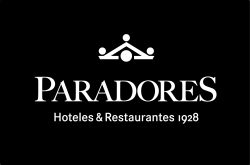Description
Parador de Toledo - Country house hotel with panoramic views (4*)
The Parador de Toledo, is set in a beautiful stone-built mansion with wooden balconies, a garden and outdoor pool. It stands on the Cerro del Emperador (‘Emperor’s Hill’) 4 km outside the city across the gorge. From here it has the most stunning views across to the historic hill-top city. This was already a Celtic stronghold when the Romans captured it and now a UNESCO World Heritage Site. Particularly prominent in the view from the Parador is the Moorish fortress, the Alcazar. Also the cathedral, noted for its paintings by Rubens, Bellini, Titian and El Greco. Toledo was for a time the capital of Spain and is famous for its blend of 3 religions - Muslim, Jewish and Christian - like the city of Cordoba. All three are still highly visible in its architecture and culture.
Toledo’s Parador takes its name, ‘Hotel Conde de Orgaz’, from the famous painting by El Greco. 'The Burial of Count Orgaz', is on display in the Church of Santo Tome in Toledo. The Parador itself offers the guest every comfort, and the warm interior makes extensive use of wood in both floors and beamed ceilings. Rugs, copperware and decorative tiles recall the Moorish influence in the area.
Perhaps the highlight of any visit to this Parador is the unparalleled view of the city which can be enjoyed over a glass of wine on the hotel’s terrace. Alternatively take in the panorama from some of the public areas or from one of the bedrooms that benefits from city views.
The Parador's restaurant serves a variety of delicious local and international dishes. You can also enjoy snacks and lighter menus throughout the day at the cafeteria.
The Parador is laid out in a spacious fashion wrapped around its seasonally-open swimming pool with stylish design and a welcoming atmosphere.
Keytel Tip:
For a very modest supplement, upgrade to a superior room and take in the beautiful landscape from your room.



Add a comment